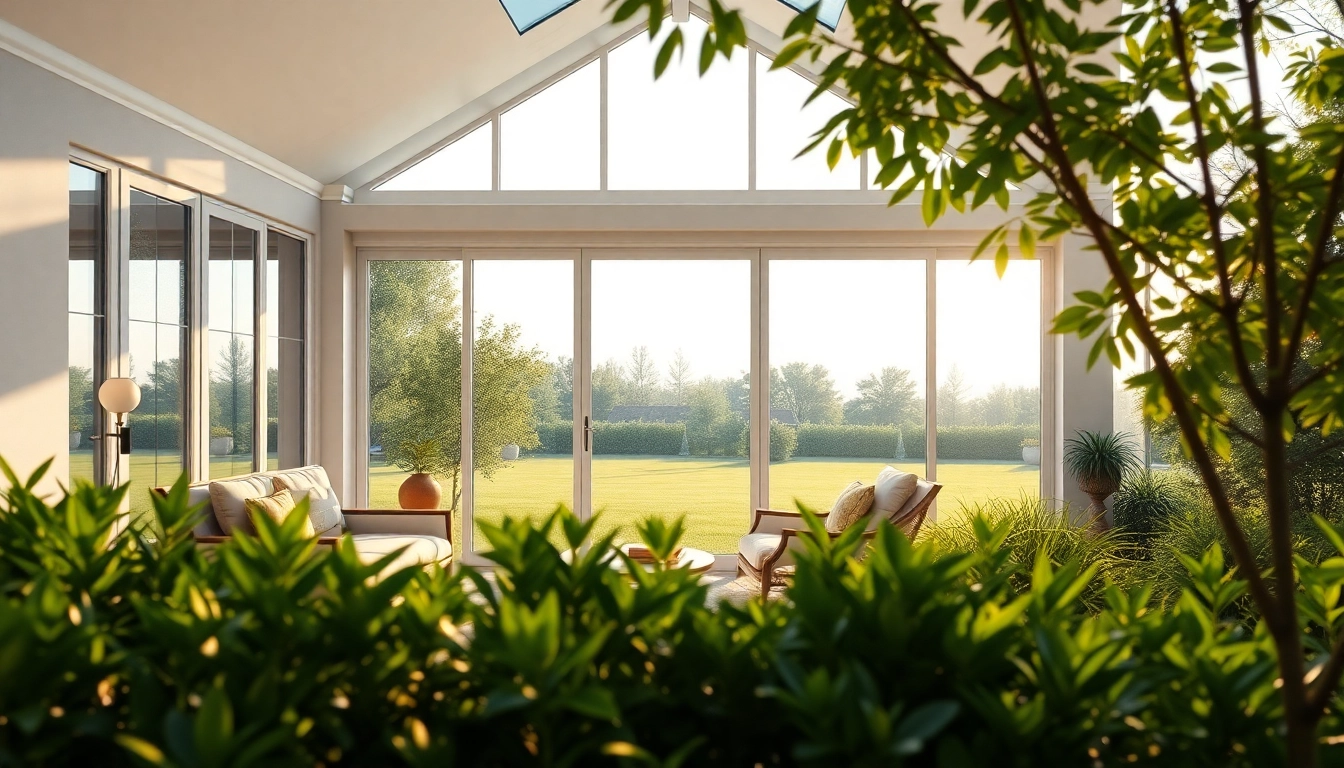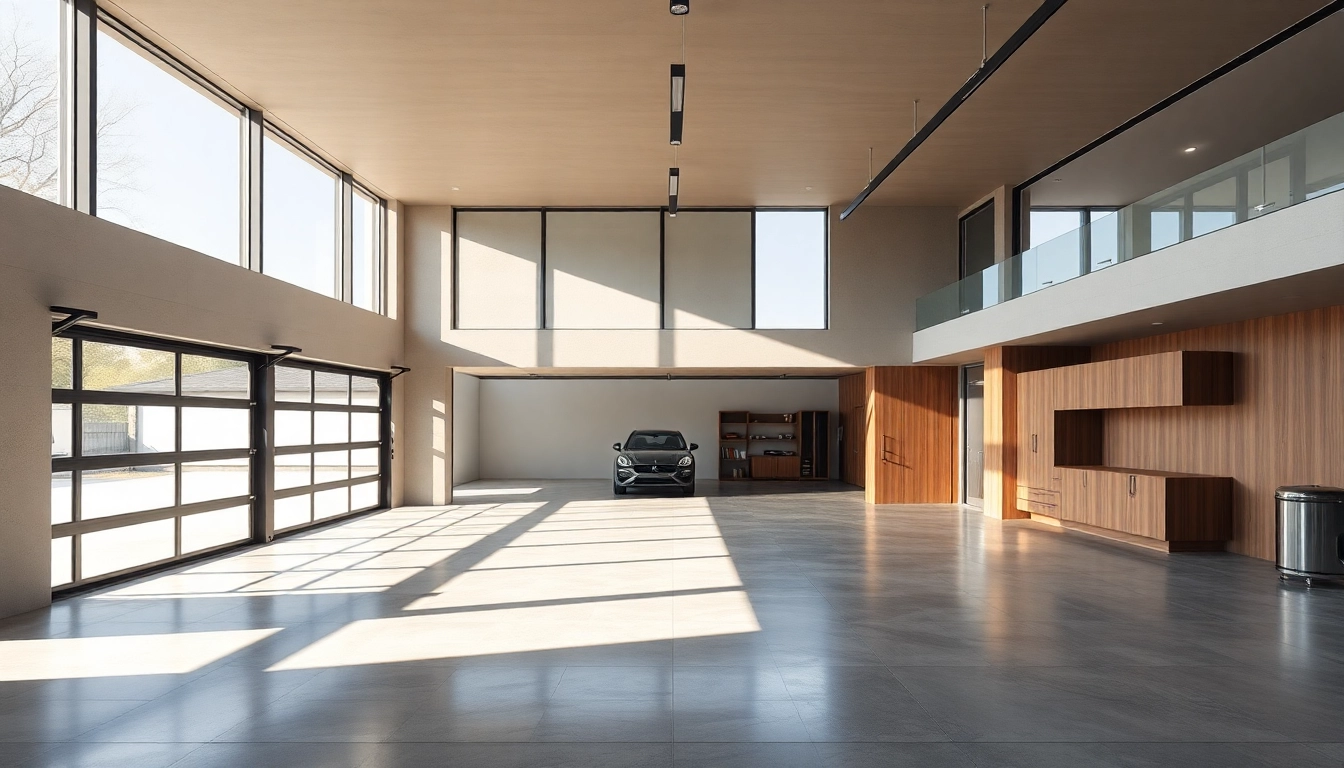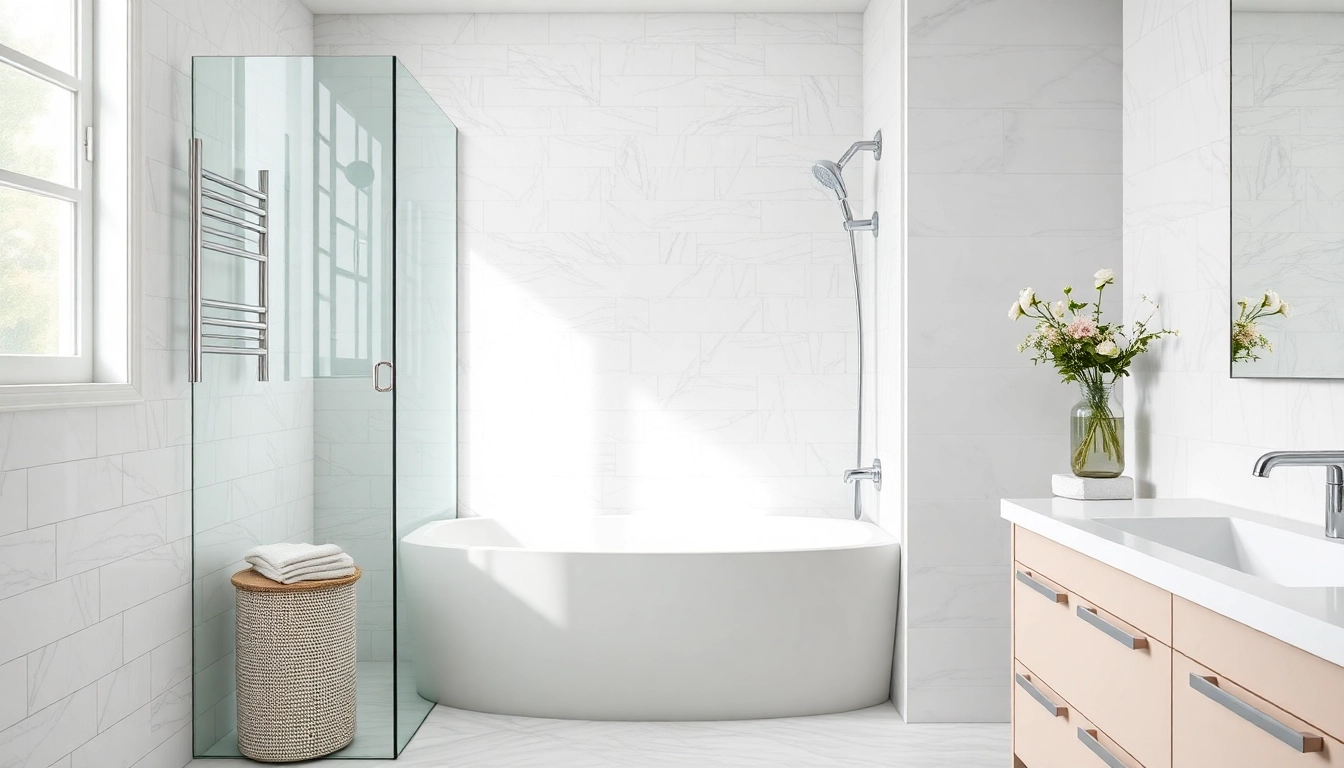Understanding the Real Glass Sunroom Concept
Defining Real Glass Sunroom
A real glass sunroom is more than just an extra space in your home; it embodies the perfect blend of indoor comfort and the beauty of the outdoors. Defined primarily by its structure made of actual tempered glass rather than its plastic or acrylic counterparts, a real glass sunroom allows for maximum sunlight and outdoor views, turning any mundane space into a bright sanctuary. Typically part of a home extension, this type of sunroom can serve various purposes—be it a place for relaxation, gardening, or entertaining guests—making it a versatile addition to any home.
Key Features and Benefits
One of the most striking features of a real glass sunroom is its energy efficiency. Designed to trap solar heat, the glass used often has thermal insulation properties, which helps maintain a comfortable temperature year-round. This minimizes reliance on heating and cooling systems, thereby reducing energy bills.
Moreover, real glass offers exceptional aesthetic appeal. Homeowners can enjoy panoramic views of their backyard or surrounding nature, creating a seamless transition between indoor and outdoor living. The durability of tempered glass also ensures that the structure can withstand various weather conditions, providing peace of mind against storms and extreme temperatures.
Another significant advantage is the enhancement of property value. A well-designed sunroom not only expands the living space but also adds architectural interest, making it more attractive to potential buyers.
Different Styles of Real Glass Sunroom
Real glass sunrooms come in multiple styles, catering to varying tastes and architectural needs. Here are some popular designs:
- Victorian Sunroom: Characterized by ornate detailing and large glass panels, this style exudes elegance.
- Contemporary Sunroom: Featuring sleek lines and minimalistic designs, contemporary sunrooms offer a modern touch to any home.
- Gabled Roof Sunroom: With a high, pitched roof, this style maximizes light and headspace, giving an airy atmosphere.
- Lean-To Sunroom: A cost-effective option, the lean-to style is often attached to the side of the house, perfect for smaller spaces.
Planning Your Real Glass Sunroom
Choosing the Right Location
Deciding on the location of your real glass sunroom is crucial. Ideally, it should be positioned to capture maximum sunlight, particularly during the winter months when daylight is scarce. Take note of the sun’s trajectory throughout different seasons to ensure that your sunroom benefits from ample natural light. Additionally, consider the views you wish to enjoy; a sunroom overlooking a garden or a scenic landscape can enhance your overall experience.
Design Considerations
When designing your sunroom, consider the overall architecture of your home, ensuring that the new addition complements existing structures. Think about the angle of the roof, window placements, and even the color of the glass and frame. Furthermore, incorporating features like ventilation, built-in seating, or even skylights can enhance comfort and functionality. Collaborating with an architect or a designer can provide professional insights, resulting in a cohesive and appealing design.
Budgeting for Your Real Glass Sunroom
Budgeting is an essential aspect of planning your real glass sunroom project. Costs can vary considerably based on size, design complexity, materials chosen, and labor. Initially, estimate the budget by researching average costs per square foot in your area. Consider additional expenses such as foundation work, electrical installations, and heating or cooling systems. Allocating an extra 10-20% for unexpected costs can provide a financial cushion, ensuring you can complete the project without exceeding your budget.
Construction and Installation Process
Materials Needed for Real Glass Sunroom
The construction of a real glass sunroom necessitates specific materials. Key components include:
- Tempered Glass: Durable and safe, tempered glass is a primary material used for walls and roofs.
- Aluminum or Vinyl Frames: These materials provide structural support while being resistant to rust and corrosion.
- Insulation Materials: Used to improve energy efficiency and maintain internal temperatures.
- Foundation Materials: Depending on the design, this might include concrete or stone.
Step-by-Step Installation Guide
The installation of a real glass sunroom can be a complex undertaking, but following a structured approach can simplify the process:
- Site Preparation: Clear the chosen site and mark the layout with stakes and strings.
- Foundation Work: Pour and set the foundation according to local building codes.
- Frame Installation: Construct and secure the frame per the design specifications.
- Glass Installation: Carefully install tempered glass panels into the prepared frames, ensuring a tight fit.
- Finishing Touches: Install any additional features such as doors, HVAC systems, and electrical outlets.
Professional Installation vs. DIY
The choice between professional installation and a DIY project often depends on individual skill levels and the complexity of the project. Professional installers bring experience, ensuring that the sunroom adheres to local building codes and weatherproofing standards. However, individuals with a strong background in construction may consider a DIY approach to save costs. It’s crucial to evaluate your capabilities and the potential challenges of the project before making a decision.
Maintenance of Real Glass Sunroom
Cleaning Techniques for Glass Panels
Regular cleaning helps maintain the clarity and aesthetic appeal of your sunroom. Utilize a mixture of water and a gentle glass cleaner to wipe down the glass panels. Use a soft cloth or squeegee to avoid scratches. For higher windows, a window cleaning pole with a squeegee attachment can effectively reach tough spots. Avoid harsh chemicals that may damage the glass or frames.
Regular Upkeep and Repairs
Maintaining the structural integrity of your real glass sunroom involves performing routine checks. Inspect the seals where the glass meets the frame, and look for signs of wear or leaks. Any damage should be addressed immediately to avoid further deterioration, which could lead to costly repairs. Additionally, ensure that the frame remains free from rust or corrosion by applying appropriate protective coatings periodically.
Seasonal Considerations for Your Real Glass Sunroom
Seasonal changes can impact your sunroom’s upkeep. In the spring, prepare it for use by cleaning the glass and checking insulation. During the summer, consider using UV protective coatings to shield from harsh sunlight. In the autumn, clear out debris that may accumulate around the structure. Lastly, during the winter months, ensure that snow or ice is removed promptly to prevent excessive weight that could damage the sunroom.
Enhancing Your Real Glass Sunroom Experience
Furniture and Décor Ideas
Turning your real glass sunroom into a functional and cozy space involves thoughtful furniture and décor choices. Opt for furniture that complements the sunlight, such as wicker or light-colored wood, which enhances the airy feel. Add cushions and throws for comfort, and consider foldable furniture that can be stored away to maximize space. Adorning the sunroom with plants can enhance the ambiance, creating a lush atmosphere that connects with nature.
Lighting to Enhance Ambiance
Effective lighting can augment the naturally bright environment of your sunroom. During the day, utilize sunlight as your primary light source. However, incorporating various light fixtures such as pendant lights, fairy lights, or dimmable LEDs can create a cozy ambiance in the evenings. Wall sconces placed strategically can help illuminate darker corners, enhancing the beauty of the space.
Integrating Nature into Your Real Glass Sunroom
Your real glass sunroom is an ideal setting to merge indoor and outdoor life. Consider incorporating greenery through indoor plants or a small garden. Vertical gardens can add lushness without occupying floor space. Creating plant shelves or using hanging planters can ensure your sunroom feels vibrant and alive. Additionally, evaluate soil and sunlight needs when selecting plants to ensure they thrive in the sunroom environment.



